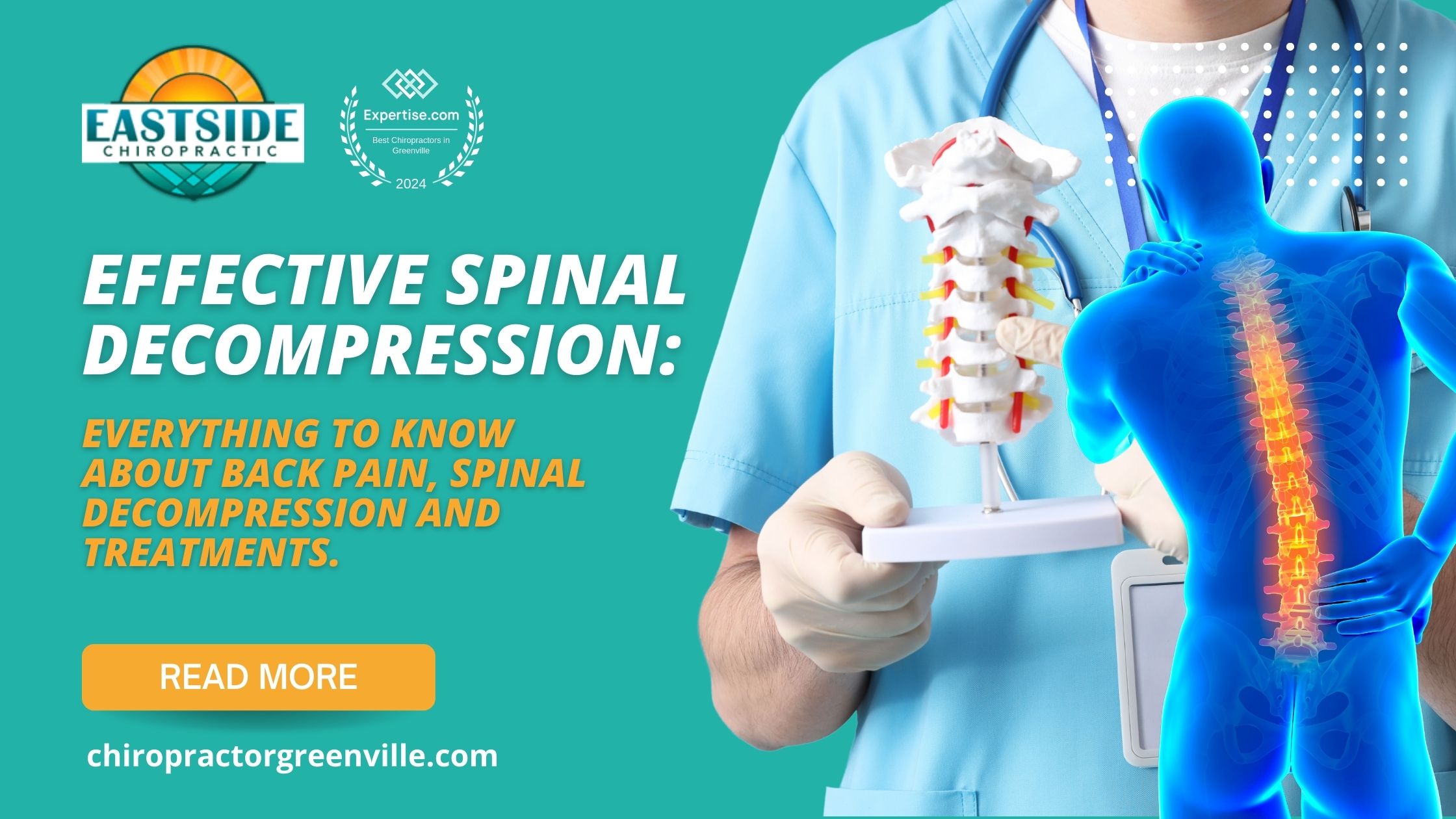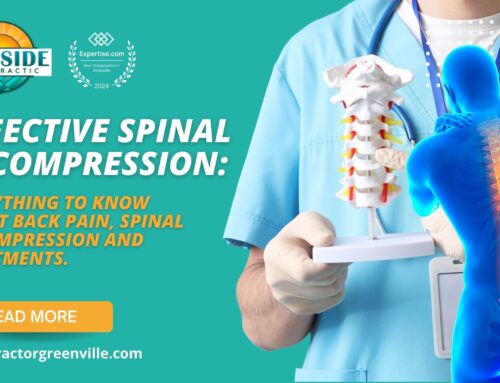Exploring Spinal Decompression: Is it a Viable Alternative to Major Spinal Surgery?
Introduction
Back pain – it’s an ailment that so many of us face, yet few of us will venture into the realm of serious treatment until the pain becomes unbearable. But what if you didn’t have to go under the knife to get relief? Enter spinal decompression, a non-invasive alternative that might just save you from the risks of major spinal surgery. Let’s dive into what spinal decompression is, the procedures involved, and why it could be the game-changer you’ve been looking for.
Understanding Spinal Decompression
What is Spinal Decompression?
Spinal decompression is a therapeutic method used to relieve pressure on spinal discs. These discs, acting as cushions between the bones in our spine, can become compressed and cause significant pain due to herniation or degeneration. The primary goal of spinal decompression is to gently stretch the spine, changing its force and position, to allow for more room and less pressure on the spinal discs.
How Spinal Decompression Works
This technique involves the use of a traction table or a similar motorized device. The patient is fitted with a harness around their pelvis and another around their trunk. By precisely targeting and stretching specific areas of the spine, spinal decompression aims to create negative pressure within the discs. This encourages retraction or repositioning of bulging or herniated discs, promoting the flow of oxygen, water, and nutrient-rich fluids into the discs for faster healing.
Types of Spinal Decompression
Spinal decompression can be categorized into two main types: surgical and non-surgical. Here, we are focusing on non-surgical spinal decompression, which includes procedures that do not require incisions or significant recovery times.
The Risks of Major Spinal Surgery
Common Reasons for Spinal Surgery
When back pain becomes chronic, debilitating, and unmanageable through conventional methods, spinal surgery can often seem like the last resort. Common conditions that may necessitate surgery include severe disc herniation, spinal stenosis, and spondylolisthesis.
Overview of Major Spinal Surgery Options
Common major spinal surgeries include spinal fusion, laminectomy, and discectomy, each targeting different issues but involving significant procedures.
Potential Risks and Complications
Surgery, while sometimes necessary, comes with its own set of risks. These may include infections, blood clots, adverse reactions to anesthesia, and prolonged recovery periods. Surgical outcomes can also be uncertain, sometimes leading to persistent pain or additional procedures.
Why Consider Spinal Decompression?
Non-Invasive Nature
Spinal decompression is a non-invasive and gentle approach compared to surgical options. It doesn’t involve cuts, stitches, or the significant risks associated with surgery.
Reduced Recovery Time
With no incisions to heal, patients undergoing spinal decompression typically experience shorter recovery times. Many can return to their daily activities much sooner than those who undergo surgical procedures.
Lower Cost Compared to Surgery
Medical procedures come with hefty price tags, and spinal surgery is no exception. Spinal decompression, on the other hand, tends to be far more affordable and is often covered by insurance plans.
Procedure of Spinal Decompression
Initial Consultation and Diagnosis
Before undergoing spinal decompression, a thorough consultation and diagnosis are essential. This includes a review of medical history, physical examination, and possibly imaging tests such as X-rays or MRI scans.
The Actual Procedure
During the procedure, the patient lies on a motorized table, and harnesses are fitted around the pelvis and torso. The chiropractor will then use the table to gently stretch and relax the spine. Each session typically lasts between 30 to 45 minutes, and a full course of treatment may require 20 to 28 sessions over five to seven weeks.
Post-Procedure Care
After each session, patients are generally advised to rest and avoid strenuous activities. Keeping hydrated and maintaining a balanced diet can also aid in the healing process.
Conditions Treated with Spinal Decompression
Herniated Discs
One of the primary conditions treated with spinal decompression is herniated discs. This condition occurs when the disc’s inner gel-like core leaks out and irritates nearby nerves.
Degenerative Disc Disease
As we age, the discs in our spine can deteriorate or degenerate, causing chronic pain. Spinal decompression can help alleviate the pressure associated with this degeneration.
Sciatica
Sciatica is characterized by radiating pain down the leg due to pressure on the sciatic nerve. Spinal decompression can help reduce this pressure, providing substantial relief.
Spinal Stenosis
Spinal stenosis involves the narrowing of the spinal canal and can cause significant pain and discomfort. Non-surgical decompression can help enlarge the spacing within the spine, reducing symptoms.
Case Studies and Success Stories
Real-Life Examples
Many patients have found relief through spinal decompression. For example, a 45-year-old man suffering from chronic sciatica found significant improvement after just a few sessions, substantially improving his quality of life.
Patient Testimonials
“I felt immediate relief after my first decompression session. Over time, the chronic pain that had plagued me for years was just gone,” says Mary, a patient at Eastside Chiropractic PA.
Who is a Good Candidate?
Ideal Candidate Profile
Ideal candidates for spinal decompression are individuals who suffer from chronic back or neck pain due to herniated discs, degenerative disc disease, or sciatica. Those who have not found relief through conventional treatments may also be good candidates.
Situations Where Spinal Decompression is Not Recommended
However, spinal decompression is not suitable for everyone. Those with severe osteoporosis, fractures, tumors, or infections within the spine should consult their healthcare provider for alternative treatments.
Comparing Costs: Spinal Decompression vs. Spinal Surgery
Breakdown of Costs
The cost of spinal decompression is significantly lower than surgical alternatives. While surgery can run into tens of thousands of dollars, decompression treatments are considerably more affordable.
Insurance Considerations
Many insurance plans cover non-surgical spinal decompression, but it’s essential to check with your provider for specific coverage details and any co-pays or deductibles.
The Role of Eastside Chiropractic PA
Expertise in Spinal Decompression
At Eastside Chiropractic PA, we bring a wealth of experience and specialized training in spinal decompression. Our knowledgeable team is dedicated to your recovery.
Credentials and Experience
Led by renowned experts in the field, our team boasts years of expertise and a deep understanding of spinal health, making us the premier choice in Greenville, SC.
Patient Care Philosophy
Our philosophy is rooted in personalized care, ensuring each patient receives tailored treatment plans designed to meet their unique needs.
Advanced Techniques and Technology
Tools and Technology Used
We utilize state-of-the-art technology and the latest advances in spinal decompression to provide the best possible outcomes.
Innovative Approaches
Our innovative approaches, combined with cutting-edge tools, mean that you’re in good hands at Eastside Chiropractic PA.
Safety and Efficacy
Success Rates
Spinal decompression has high success rates, with many patients reporting significant improvements in pain and quality of life.
Safety Protocols
Our stringent safety protocols ensure that each procedure is conducted with the utmost care and precision, minimizing any risks.
Preparing for Spinal Decompression
Pre-Procedure Instructions
Before your procedure, we provide detailed instructions to ensure you’re fully prepared, both mentally and physically.
Mental and Physical Preparation
Adequate preparation, including hydration and a positive mindset, can contribute to the success of the decompression sessions.
Recovery and Rehabilitation
Post-Procedure Guidelines
Following the procedure, adhering to our post-session guidelines will ensure the best outcomes. Gentle exercises and proper posture are crucial.
Role of Physical Therapy
Physical therapy complements spinal decompression, aiding in faster and more complete recovery by strengthening the surrounding musculature.
Conclusion
Spinal decompression at Eastside Chiropractic PA offers a safe, non-invasive alternative to major spinal surgery. With reduced recovery times, lower costs, and high success rates, it’s a viable option for many suffering from chronic back or neck pain. Don’t let pain control your life. Consider spinal decompression and take the first step towards a pain-free future.
Frequently Asked Questions
What does spinal decompression feel like?
Spinal decompression feels like a gentle stretch and relaxation of the spine. Most patients find it comfortable, with some even falling asleep during the procedure.
How long does each session last?
Each spinal decompression session typically lasts between 30 to 45 minutes.
Can it be combined with other treatments?
Yes, spinal decompression can be effectively combined with other treatments, such as physical therapy, chiropractic adjustments, and acupuncture for optimal results.
Is spinal decompression covered by insurance?
Many insurance plans do cover spinal decompression, but it’s essential to check with your provider for specific details.
How soon can I return to normal activities?
Most patients can return to their normal activities relatively quickly, often within a day or two, depending on their individual condition and response to treatment.


